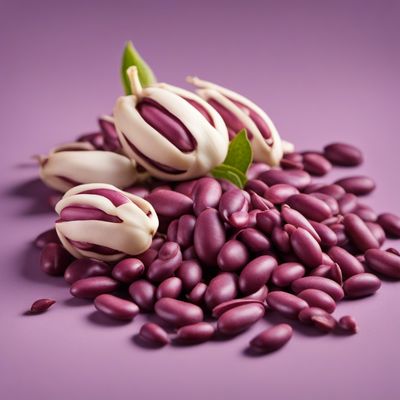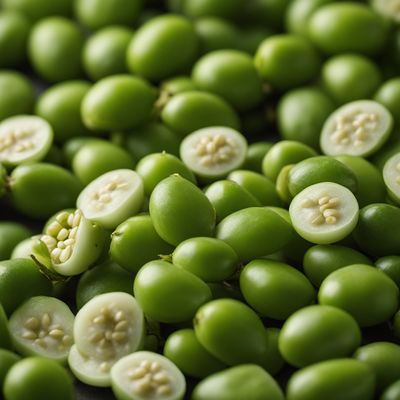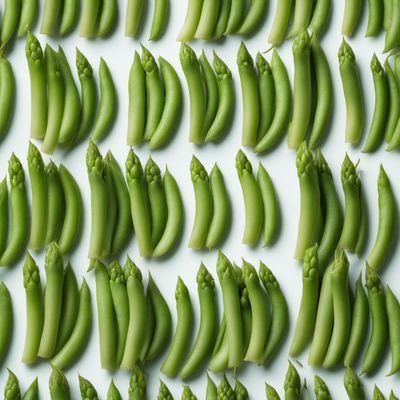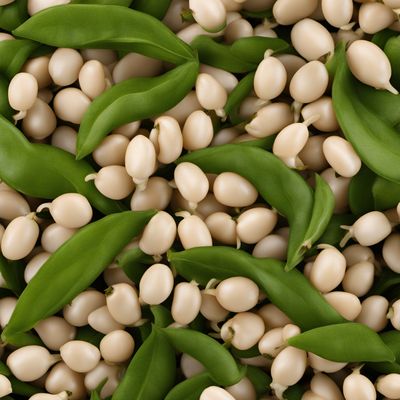
Ingredient
Mat bean (young pods)
The Green Gems of Legumes
Mat beans are small, oval-shaped legumes with a vibrant green color and a tender yet slightly firm texture. They have a nutty and earthy flavor, similar to lentils, and their mild taste allows them to absorb the flavors of spices and seasonings. With their delicate yet hearty nature, mat beans are a popular choice in Indian, Middle Eastern, and African cuisines.
Origins and history
Mat beans have been cultivated for centuries in India, where they are a staple in regional cuisines such as Maharashtrian and Gujarati. They are believed to have originated in the arid regions of Central India and have since spread to other parts of the world. Mat beans have a rich cultural significance and are often used in festive dishes and celebrations. They are also valued for their ability to thrive in dry and drought-prone areas, making them an important crop for food security in many regions.
Nutritional information
Mat beans are a good source of plant-based protein, dietary fiber, and essential minerals such as iron and magnesium. They are also low in fat and calories, making them a nutritious addition to a balanced diet. A 100-gram serving of cooked mat beans provides approximately 140 calories, 9 grams of protein, 7 grams of fiber, and various vitamins and minerals.
Allergens
Mat beans are not known to be allergenic, but individuals with legume allergies should exercise caution and consult with a healthcare professional if unsure.
How to select
When selecting mat beans, look for young pods that are bright green in color and free from blemishes or discoloration. The pods should feel firm and snap easily when bent. Avoid pods that are overly mature or have become yellow or brown, as they may be tough and less flavorful. If purchasing dried mat beans, choose ones that are uniform in size, without any signs of mold or insect damage.
Storage recommendations
To store fresh mat beans, remove them from the pods and place them in a perforated plastic bag or airtight container in the refrigerator. They can be stored for up to a week. Dried mat beans should be stored in a cool, dry place in an airtight container to prevent moisture and insect infestation. Properly stored, dried mat beans can last for up to a year.
How to produce
Mat beans can be grown in home gardens or small-scale farms with proper care and attention. They require a warm and sunny climate, well-drained soil, and regular watering. Sow the seeds directly in the ground or in containers, and provide support for the vines to climb. Harvest the young pods when they are tender and green, before the seeds inside fully develop.
Preparation tips
Mat beans can be boiled, steamed, or pressure-cooked until tender and used in a variety of dishes. They are commonly added to curries, stews, and soups, where they absorb the flavors of the spices and create a hearty texture. Mat beans can also be sprouted and used in salads or stir-fries for a fresh and crunchy element. Additionally, they can be ground into flour and used to make traditional Indian snacks like vada or papad.
Culinary uses
Mat beans are commonly used in Indian, Middle Eastern, and African cuisines. They are a key ingredient in dishes such as matki usal (spiced mat bean curry), sprouted mat bean salad, and matki pulao (mat bean pilaf). They can also be used as a filling in savory pastries or added to vegetable stir-fries for added texture and protein.
Availability
Mat beans are primarily cultivated in India, particularly in the states of Maharashtra, Gujarat, and Madhya Pradesh. They are also grown in other parts of Asia, Africa, and South America. Mat beans are less commonly available in Western countries but can be found in specialty grocery stores or online retailers that cater to international cuisines.
More ingredients from this category » Browse all

Sword bean (young pods)
The Versatile Bean of the Tropics

Lablab beans (with pods)
The Versatile and Nutritious Lablab Beans: A Pod of Health and Flavor

Broad beans (with pods)
The Verdant Gems: Exploring the World of Broad Beans

Mung beans (with pods)
The Versatile Green Gem

Black gram (young pods)
The Green Delicacy: Black Gram Young Pods

Goa bean (young pods)
The Green Delight: Exploring the Versatility of Goa Bean Pods

Black eyed peas (with pods)
The Versatile Delight: Exploring the World of Black Eyed Peas with Pods

Rice beans (with pods)
The Versatile Delight: Exploring Rice Beans with Pods

Stink beans (with pods)
The Pungent Delicacy: Stink Beans

Vetches (with pods)
The Versatile Vetches: Pods Packed with Potential

Ervils (with pods)
The Versatile Legume: Ervils

Yardlong beans (with pods)
The Versatile Veggie: Exploring Yardlong Beans